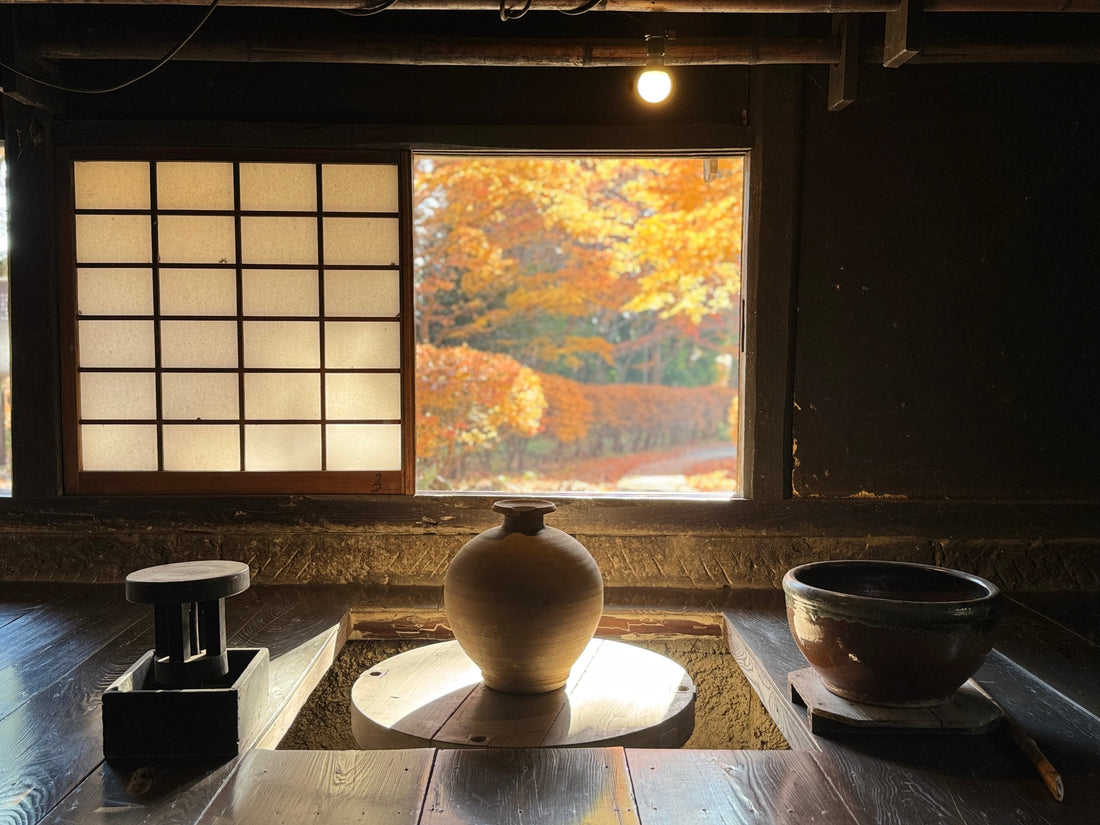
Mashiko Ware: A Timeless Japanese Craft Tradition
Share
Japan, with its rich natural landscapes, has always had access to abundant natural materials, making it a perfect place for the development of ceramics. Over time, various regions across Japan have developed their own distinctive pottery styles, often using locally sourced materials. One of the famous potteries in Japan is Mashiko ware.
What is Mashiko Ware?
Mashiko is a small town in the southeastern part of Tochigi Prefecture, with a population of around 20,000 people. Located approximately 80 kilometers from Tokyo, this town is deeply rooted in the history of Japanese pottery and is most famously known for its traditional pottery style, Mashiko-yaki (益子焼).

The town has a long history of ceramic production, and Mashiko ware has been made in the area for centuries. But you might wonder, why did I choose Mashiko ware as our first product? The answer is simple: I’m from a city near Mashiko, and I've visited many times throughout my life. Mashiko ware has been part of my world since childhood, and it holds a special place in my heart.
The Charm of Mashiko Ware
What makes Mashiko ware so special? It is crafted using natural materials, giving it distinct characteristics. The pottery is known for its rustic aesthetic, with organic beauty derived from natural glazes. The forms are simple, yet functional, often exuding a warmth and earthiness that mass-produced ceramics can’t replicate. Mashiko ware is thicker than porcelain, giving it a substantial feel that helps retain the warmth of food longer—a small but meaningful detail in daily use.


The History of Mashiko Ware
The history of Mashiko ware dates back to the early 19th century. In 1853, Keisaburo Otsuka, a potter from nearby Kasama in Ibaraki Prefecture, began making pottery in Mashiko. The region was blessed with abundant, high-quality clay and its proximity to the large Tokyo market made it an ideal location for pottery production. Local artisans initially produced practical items like planters, water jars, and earthenware teapots for everyday use.
However, the transformation of Mashiko ware into a globally recognized pottery style didn’t come until the 20th century.
In 1924, the renowned potter Shoji Hamada moved to Mashiko and began developing his own distinctive style. Hamada was a key figure in the Mingei Movement (the Japanese Folk Art Movement, 民藝運動), which sought to elevate traditional craftsmanship into art while celebrating the beauty of the handmade. Under his influence, Mashiko ware evolved from simple, functional pottery to a more refined and artistic form, known for its rustic yet sophisticated beauty. Hamada’s work and philosophy not only shaped the local pottery scene but also transformed Mashiko into a major pottery hub, attracting artisans from around the world.


Decline and Revival of Mashiko Ware
For many years, Mashiko pottery was a staple in everyday life, with people purchasing ceramics for their homes and daily use. However, with the rise of mass-produced, inexpensive ceramics in the market, demand for handmade pottery declined. In 1986, there were 272 potters in Mashiko, but by 2022, that number had decreased to 161 potters, a sharp reduction of nearly two-thirds in just over three decades.
Like many, I had also lost touch with pottery for a while. However, after moving to the UAE, I met people who reminded me of the unique charm and growing demand for handcrafted pottery. This realization inspired me to introduce Mashiko ware to the UAE, where people value unique, functional art pieces.

